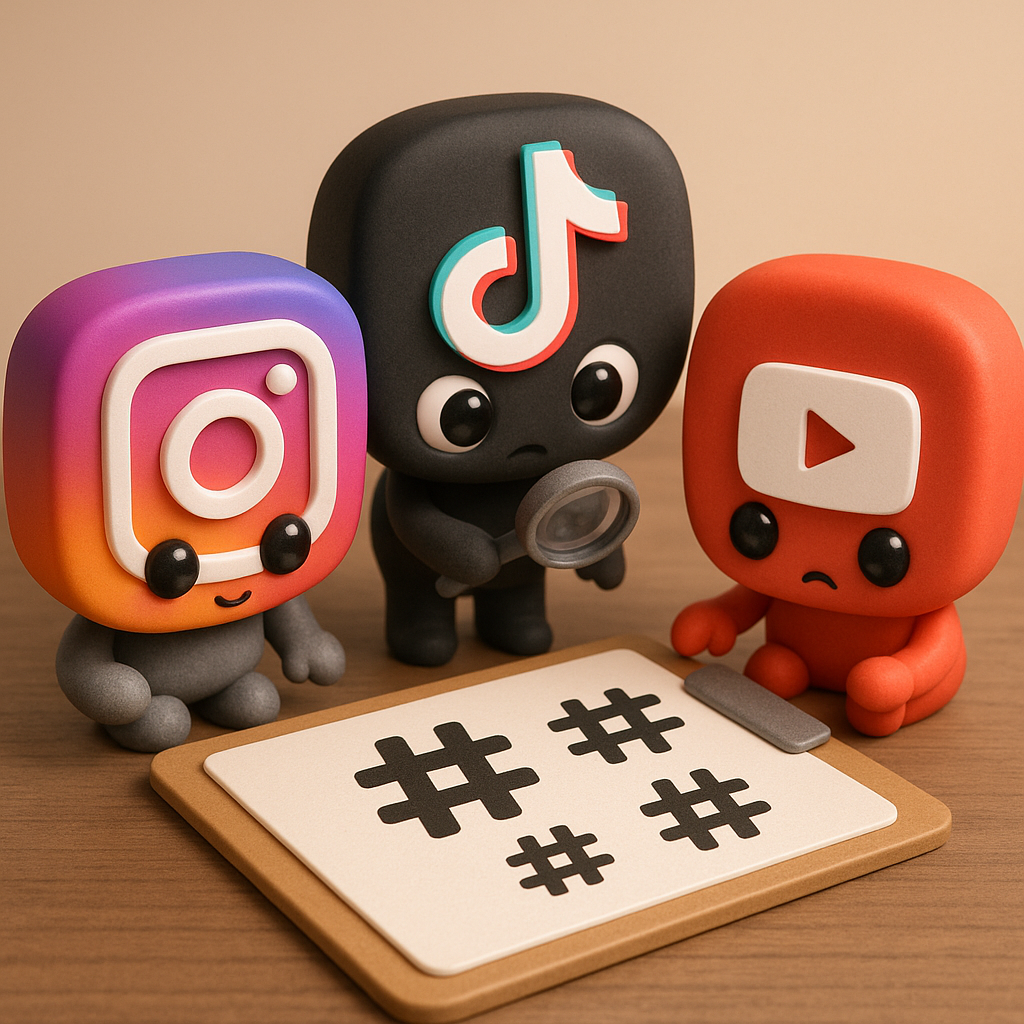
How Social Media Platforms Analyze Hashtags: Trending vs Unique vs Niche and How You Should Choose
In today’s digital landscape, hashtags aren’t just a fun addition they are one of the most powerful tools to drive visibility, reach, and engagement across platforms like Instagram, TikTok, and YouTube.
But not all hashtags are created equal.
Platforms now scrutinize hashtag behavior to categorize them into trending, unique, and niche-relevant segments. So how do you know which ones to use?
1. The Rise of Hashtag Intelligence on Social Platforms
Social media platforms increasingly rely on AI and machine learning to categorize hashtags and track performance across content types, user demographics, and engagement rates.
-
Trending hashtags are those experiencing a surge in usage. Platforms boost this content to capitalize on attention, but it's highly competitive.
-
Unique hashtags are original, often branded, and rarely used outside of specific campaigns. These help with identity and long-term brand recall.
-
Niche-relevant hashtags target a focused audience. While the reach is smaller, the engagement tends to be deeper and more targeted.
2. Why Platforms Care About These Hashtag Types
Each social media app has one core mission: keep users engaged. Algorithms want to serve relevant content faster. By classifying hashtags, they can better match users with content that aligns with their interests, whether viral, community-based, or hyper-specific.
Instagram, for example, categorizes content into interest clusters. TikTok uses hashtag challenges and sounds as behavioral anchors. YouTube uses tags for discoverability in shorts and titles. They all prioritize:
-
Engagement density per hashtag
-
Relevance to content and audience
-
Freshness and frequency of usage
3. How to Choose the Correct Hashtags for Your Content
A winning hashtag strategy blends all three types: trending, unique, and niche-relevant. Here's how to build your mix:
✅ Use 1–2 Trending Hashtags
-
Great for exposure and appearing on explore pages.
-
Ideal during events, news cycles, or viral trends.
-
Risk: Overuse can drown your post in competition.
✅ Include 1–2 Unique or Branded Hashtags
-
Helps build your own content universe.
-
Boosts brand identity and helps you track campaign success.
-
Great for user-generated content drives.
✅ Use 3–5 Niche-Targeted Hashtags
-
Targets your specific community or interest group.
-
Less crowded, increasing the likelihood of high engagement.
-
Excellent for audience retention and follower growth.
4. Pro Tips for Smarter Hashtag Use
-
Research before posting. Use tools like Hashtagify, TikTok Creative Center, or Instagram search to check hashtag performance.
-
Avoid banned or overused tags. These can reduce visibility or shadowban your post.
-
Rotate hashtags to avoid appearing spammy or repetitive.
-
Track analytics. Use platform insights to evaluate which hashtags bring the most impressions, saves, or follows.
How Hashtags Have Been Misused Since 2023
Since 2023, many creators and brands have fallen into the trap of using hashtags the wrong way — not realizing how much algorithms have evolved. What once worked in the earlier days of social media became less effective, and in many cases, counterproductive.
1. Overloading Posts With Irrelevant Hashtags
Creators began stuffing their captions with 20–30 hashtags, hoping to cast a wide net. But quantity didn’t mean quality. Platforms like Instagram and TikTok started deprioritizing posts with irrelevant or spammy tags, even penalizing them in algorithmic rankings.
2. Using Only Viral or Generic Tags
Many users relied too heavily on trending or ultra-popular tags like #fyp, #viral, or #explorepage. While these had massive traffic, the competition was fierce, and the tags were too broad to bring targeted engagement. As a result, posts often got buried instead of seen.
3. Ignoring Niche Communities
Between 2023 and 2024, the most successful content often came from niche-focused accounts. However, many users ignored specific hashtags tied to their actual content category or audience. Skipping niche tags meant missing out on highly relevant viewers who were more likely to engage or convert.
4. Hashtag Copy-Paste Syndrome
Some accounts reused the same exact hashtags on every post. Algorithms picked up on this behavior as lazy or spammy. Instead of boosting visibility, this repetitive approach started to limit organic reach.
What This Means Today
The misuse of hashtags since 2023 highlighted a need for smarter, more strategic tagging. It’s no longer about what's trending — it's about relevance, balance, and adaptation to each platform's evolving algorithm.
To stay ahead today, creators must use hashtags with intention, mix broad and specific terms, and regularly update their strategy based on performance insights.
Conclusion
Choosing the right hashtag is part data, part creativity. By understanding how platforms distinguish between trending, unique, and niche-relevant hashtags, you can craft a smarter, more balanced strategy that gets your content seen by the right people at the right time.
Don't just chase what's popular. Own your space with strategic tagging.